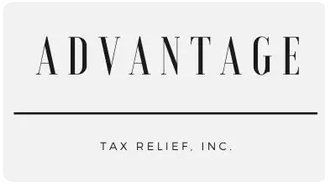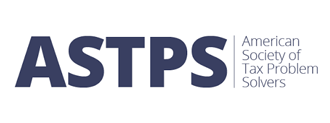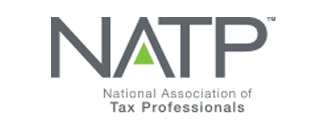Gig Workers, Be on the Lookout
September 8, 2023
September 8, 2023
How On-Demand Workers Can Reduce Their IRS Audit Risk
As the shift from traditional employment to self-employment and business ownership continues, many workers are finding themselves in a brand-new situation. The IRS has noticed the shift to gig work, freelancing and self-employment, and their auditors and agents are increasingly focusing on those brand-new small business owners.
The audit rate for ordinary individual taxpayers has less than a 1% chance of getting a notice from the IRS. For small business owners, however, the audit rate is on the rise, and if you work in the gig economy that means you.
The rising audit rate for small business owners is certainly cause for concern.
If you are being audited by the IRS or if the IRS is claiming you owe $10,000 or more, contact our firm
immediately for a consultation.
If you want to stay on the good side of the IRS, these strategies could greatly reduce your personal risk of an audit.
Track Earnings on the App or Platform
One of the biggest red flags for IRS auditors is unreported or misreported income. It is absolutely critical for all gig workers, freelancers, and other self-employed individuals to track their earnings carefully and report them correctly.
Tracking those earnings does not have to be cumbersome, and many participants in the gig economy already make it easy. If you are working for an app-based service, you may be able to find your total earnings on the platform - no calculator or spreadsheet required.
If you’re not, it’s important to track all of your income on something like QuickBooks. That way, when the IRS asks you for more information, you have it ready.
Ask Small Volume Clients for 1099 Forms
A single gig worker can have dozens of individual clients, and that can make accurate accounting and tax reporting difficult. One of the best ways to close this gap is by asking every client to issue a 1099-MISC form showing how much was earned throughout the year.
Major clients may already issue these 1099-MISC forms, but smaller ones may not realize they have this kind of reporting responsibility. Asking them nicely and explaining the importance of accurate reporting could convince them that the form really is required.
Check with Payment Processors for Accurate Figures
Another easy way to keep track of your earnings is through the payment processor you rely on. Services like PayPal, Stripe and Payoneer allow clients to pay freelancers and gig workers quickly, but they also tally up the individual earnings and provide handy reports for those small business owners.
If you are unsure about what to report to the IRS, you can simply go into the payment processor app or website and tally it up. Some payment processors make it easy, with detailed reports, while others require a bit of sleuthing. Either way, you can probably get the information you need this way.
Keep Your Deductions to a Reasonable, Legally Allowed Level
As a gig worker you are essentially a small business owner, and that entitles you to a host of new tax deductions. From the car you drive to the electricity powering your home office, lots of things you use every day can be deducted to lower your final tax bill.
The problem arises when gig workers and freelancers get greedy, writing off personal items and services as business expenses and invoking the ire of the IRS in the process. If you want to stay off the tax collection radar, make sure the deductions you claim fall within reasonable limits. Outsized deductions are a huge red flag for auditors, and writing off too much could put you at the top of the list.
Make Your Estimated Payments on Time
If you only do a few gigs here and there, you may not have to worry about making estimated payments to the IRS. But as your business grows, chances are you will be required to make those estimated payments - or face additional penalties down the line.
For those who are required to make quarterly payments, writing those checks promptly is important, so mark your calendar and make sure you set aside enough money to pay the IRS. These quarterly payments are a way of life for the self-employed, and that includes a growing number of gig workers.
The gig economy is growing fast, and that is good news for those who long to be their own bosses. As more and more employees leave their jobs for lives of self-employment, the IRS is already taking notice, and that could be bad news for unwary and incautious taxpayers. The tips listed above can help you reduce your risk of trouble, so you can focus on building your business instead of worrying about the IRS.
If you're facing IRS problems and owe $10,000 or more in back taxes or are being audited, reach out to our tax resolution firm, and we'll schedule a free and confidential consultation
to explain your options thoroughly and help you permanently resolve your tax problem.


October 1, 2025
It seems like natural disasters such as hurricanes, floods, earthquakes, wild fires, and tornados are happening all the time and just about everywhere. Climate change also seems to be making these disasters more deadly and more destructive. Many people do step up to help survivors with needed financial donations. The only thing worse than the disasters themselves are the scammers that exploit these situations for financial gain at the expense of hard working and well-i ntentioned survivors and donors. Like yourself! Scams can take the form of fake charities and impostors posing as legitimate organizations or government agencies. Common scams typically entail vague appeals for donations without details, fake websites with names like real charities and caller ID tricks to appear legitimate. Several warnings signs of these scammers are: 1) pressure to give immediately, often preying on your emotions and not logic 2) a thank-you for a previous donation you don’t recall making 3) a request for payment by cash, gift card or wire transfer. The last are scammers’ favored payment methods because the money is easy to access, difficult to trace and almost impossible to cancel. A legitimate charity will welcome your donation whenever you choose to make it and by whatever means you choose. A great way to verify their legitimacy is to use the IRS Tax Exempt Organization Search tool at https://apps.irs.gov/app/eos/. Additionally, clients should always ask for a receipt and then check their bank or credit card statements to ensure the donation amount is accurate. If you think you were a victim of a suspected scam, you can and should report them to the Federal Trade Commission at https://reportfraud.ftc.gov/. How Advantage Tax Relief Can Assist You At Advantage Tax Relief, based in Itasca, IL, we have over a decade of experience helping individuals and businesses resolve tax issues. Our team specializes in offering personalized tax relief and tax resolution solutions tailored to your unique needs. We will work with you to assess your situation and explore your options, whether it’s an Offer in Compromise, installment agreements, or other strategies. Our experience allows us to identify the best path forward to ease your tax burden and guide you toward financial freedom. If you're facing tax debt, don't wait. Advantage Tax Relief is here to assist you with effective, professional help. Call Advantage Tax Relief today at 630-773-3200 to schedule a consultation and take the first step toward resolving your tax issues.

August 29, 2025
First, working overtime does not mean you are getting an automatic increase in your take-home pay because it is not going to be taxed. That is not what is going to happen. The tax savings will be in the form of a tax deduction when you file your Federal tax return the following year. There will be no immediate impact. Second, it only applies for Federal income taxes. It does not include State, Social Security or Medicare taxes. Third, it also only applies to the overtime premium and within certain deduction and wage limits. You can only deduct the pay that exceeds your regular rate of pay. The 'half' portion of 'time-and-a-half' compensation. For example, say you make $20 per hour and work 5 hours of overtime that week at time-and-a-half. The deduction would the Federal tax on $50 of premium pay. ($20 divided by 2 times 5 hours) Finally, the maximum annual deduction is $12,500 for single filers and $25,000 for joint filers. The deduction phases out for taxpayers with modified adjusted gross income over $150,000 (or $300,000 for joint filers).



